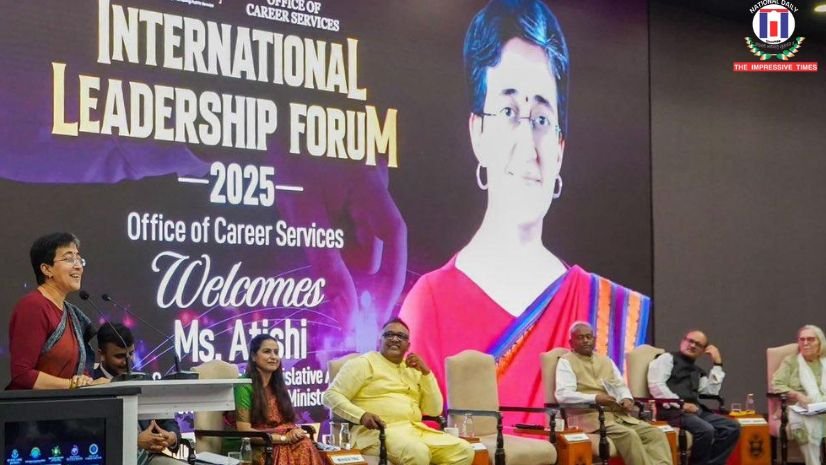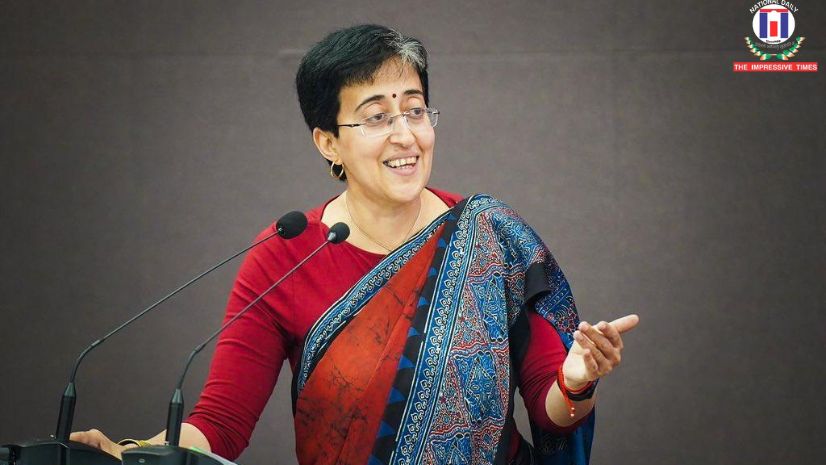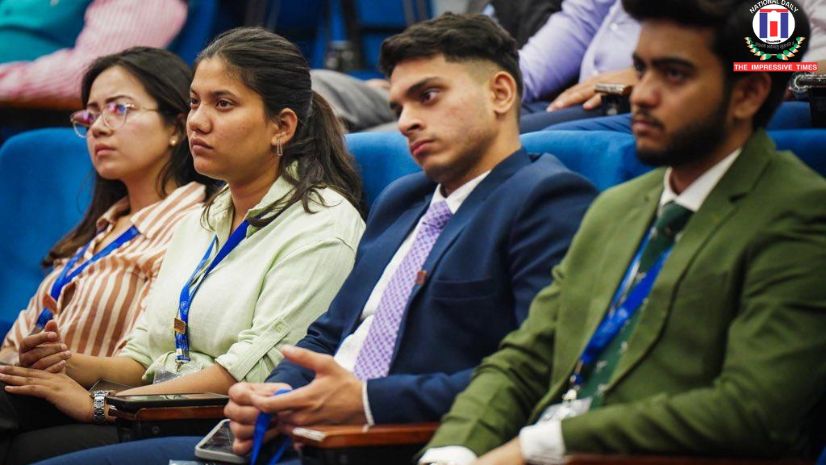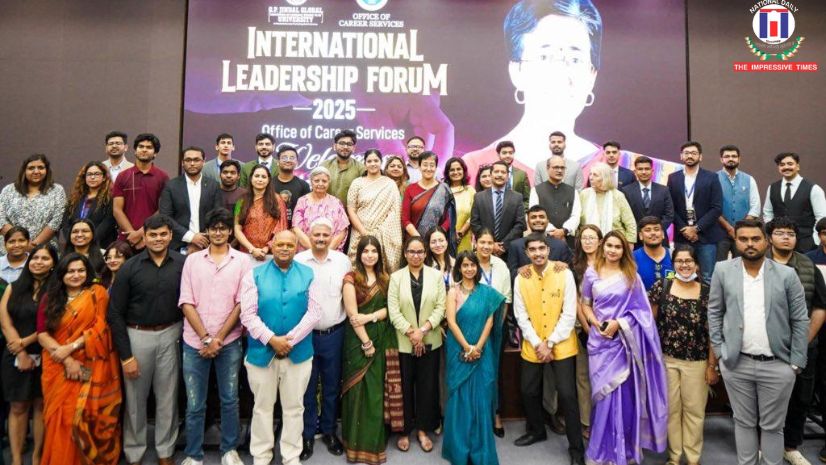
NEW DELHI, 8 APR2025: In a keynote address at OP Jindal Global University’s International Leadership Forum 2025, Leader of Opposition (LoP) in Delhi Assembly and former CM, Atishi, appealed to India’s youth, asking them to stop chasing jobs and start creating them. “India’s demographic dividend can either be our greatest asset—or it can become a tinderbox, fueling mass unemployment and social unrest,” she warned, highlighting the critical challenges facing India’s higher education system.
Citing Delhi’s pioneering Business Blasters program where government school students came up with 50,000 startups annually with just ₹2,000 in seed money, Atishi showcased a new model of grassroots entrepreneurship that defies conventional notions of success. “If India is to become a developed economy, politicians alone won’t make it happen. We all must take responsibility,” she declared, challenging young Indians to become the architects of the country’s economic future.
Speaking on the theme “The Evolving Landscape of Higher Education in India,” Delhi Assembly LoP and former CM Atishi painted a vivid picture of India’s heterogeneous education system, characterized by stark inequalities. “When you look at higher education, for every world-class university which provides academic resources, infrastructure resources, access to world-class education to all of its thousands of students studying here, you have universities which are known for the fact that you don’t actually have to go to the university to acquire your degree,” she remarked.

The former Delhi CM emphasized that India’s demographic dividend – with one in every five young people globally residing in India – could either propel economic growth or trigger social instability. “Every month till 2035, 10 lakh Indians will turn 18. This demographic dividend can either be a boon or a curse,” Atishi cautioned. “It can be the launchpad for the Indian economy to go forward, because this is what formed the basis of the development that took what we now call the first world countries, the developed economies forward.”
Atishi said, “So therefore, when we are talking about higher education, it is not some esoteric subject. The future of our country, the future of its economy and the stability of our country and its society really depends on where our higher education is going. Not just the number of young people we have who are 18 and above. India has currently 25 crore students studying in schools and as I said, this is either an opportunity for economic growth or this is an opportunity which can be a tinderbox and create a lot of social instability.”.“
Atishi highlighted alarming statistics that underscore the challenges facing India’s youth. According to data from 2021-22, approximately 4.33 crore students were enrolled in higher education institutions, with roughly 1.5 crore young people entering these institutions annually. Nearly 60% of them pursue traditional courses like BA and B.Com, primarily to prepare for government jobs.

However, the outlook for government job aspirants is bleak. “Between 2014 and 2022, there were 22 crore applicants in India for government jobs. And out of that, only 7.2 lakh aspirants got jobs – not even 10 lakhs. This is just 0.32%,” Atishi revealed. “These are people who probably spent a decade of their lives preparing for those exams.”
The employment situation for graduates is equally concerning. “Data shows that 42.3% of graduates in this country are unemployed,” she said. Citing the Economic Survey of 2023-24, Atishi noted that 51.25% of students graduating from Indian universities are deemed unemployable. Even among those with engineering degrees, NASSCOM reports that only 40% are employable.
Faced with automation and artificial intelligence threatening existing jobs, Atishi pointed out that according to a McKinsey study, India needs to create 9 crore new non-agricultural jobs by 2030 to accommodate its young workforce. “Where are these new jobs going to come from?” she questioned. “Between automation and artificial intelligence, industrial jobs are going away by the day.”
Atishi argued that beyond policy initiatives, a fundamental shift in mindset is essential. “Our entire education system, our entire ecosystem of family members, neighbours, relatives, from the time a child is in school, especially those students who perform well academically, they are just told one thing – you have to find a good job,” she observed. “And the best job is a government job because it is a safe job.”

This risk-averse mindset contradicts Indians’ natural entrepreneurial spirit, according to Atishi. “Indians have been extremely entrepreneurial in going to different parts of the world. And you have Indians who have set up their own small businesses, motels, shops, in countries where they did not know the language, where they did not have access to any kind of economic startup, and they had no one to support them.”
To foster an entrepreneurial mindset among young people, the former Delhi CM shared initiatives implemented during the Arvind Kejriwal government’s tenure in the Delhi government, particularly the Entrepreneurship Mindset Curriculum for students in grades 9-12. The Business Blasters project, which provides ₹2,000 in seed money to each student for starting businesses, has generated 50,000 startup ideas annually from Delhi Government School students over the past four years.
She highlighted several success stories, including Abhishek, an orphan who established ‘Padhai Vadhai,’ an inclusive educational firm with four offline centers that now earns him ₹1.5 lakh monthly. Another student who struggled academically runs AK Logistics, a courier service with 50 employees and a monthly income of ₹2 lakh, while a young girl from a low-income family in northeast Delhi created Nutri Crisps, a gluten-free snack business employing 21 housewives part-time.
Similar initiatives are now underway in Punjab, where one student startup, Solar Sharks, designs solar-powered vehicles and farm equipment, eliminating the need for fossil fuels in rural areas.
Atishi lamented that despite these promising examples, Indian society has become increasingly risk-averse. “Young people between the ages of 25 and 35” have historically driven major social changes and revolutions globally, she noted, but today’s youth are “cocooned into their cubicles” and preoccupied with placement interviews and paychecks.
Drawing from her personal experience, Atishi recalled how her ninth-grade economics textbook in 1996 classified India as a developing country that was expected to become developed by 2020. “I suspect that if I pick up the 9th standard economics textbook today, I am assuming the 2020 date has been taken away, but it would say the same thing – that India is a developing economy,” she observed.
The former Delhi CM concluded her address with a call to action, urging students to think beyond safe career choices and consider their potential impact on the country’s future. “If India has to become a developed economy, if India has to provide jobs and economic opportunities for all the young people – those who come from metropolitan cities, those who come from small towns, those who are coming from rural India – then it is not just politicians who are going to do it. All of us have to take responsibility.”
She warned against the “midlife crisis” experienced by many successful professionals who, despite material achievements, struggle to find meaning in their work. “That motivation comes from the ability to make a difference, from being able to see that what I’m doing is going to bring a positive impact in the world that I live in,” Atishi said, expressing hope that the “bright, young, energetic students would make a lot of difference in the world.”







No Comments: